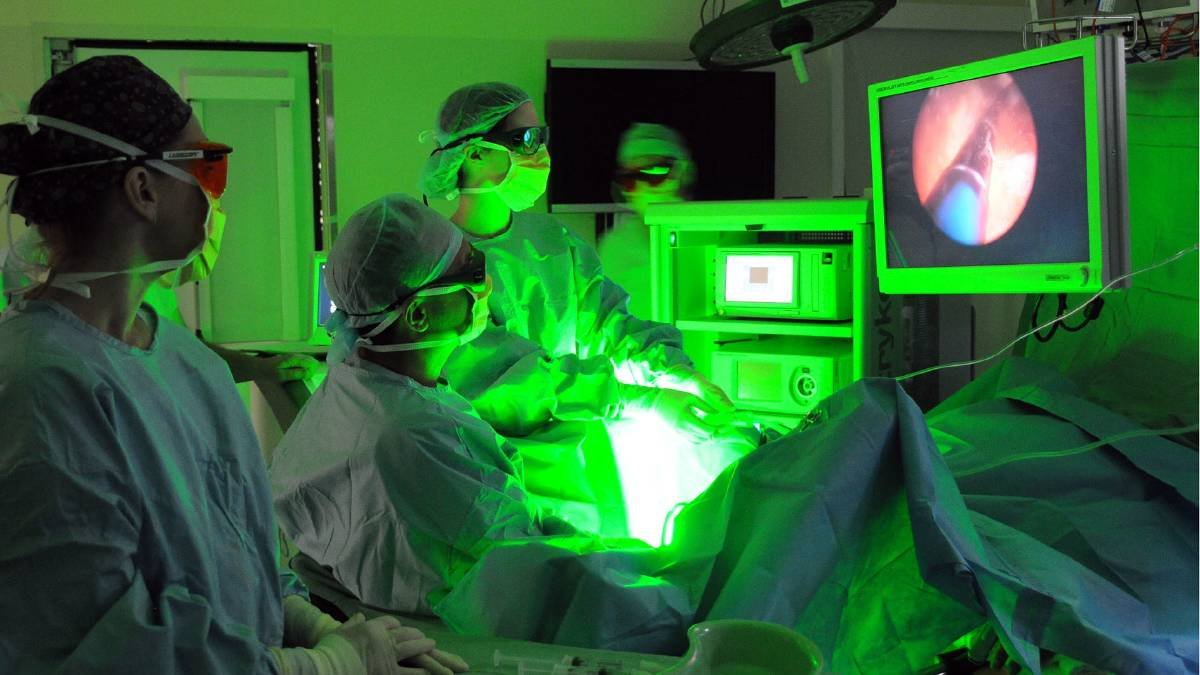Laser management for enlarged prostate and stone disease
September 19, 2018 | Wednesday | Features | By Dr. Prasanna Venkatesh, Dr. Maneesh Sinha
Technological advancements are occurring on a day-to-day basis with the management of urinary stones undergoing a transformation.
Image credit- portnews.com.au
Urology has seen dramatic changes over the last few years with certain conditions becoming very common with age. The advent of laser in Urology has revolutionized the way in which we treat such disorders of the urinary tract. Technological advancements are occurring on a day-to-day basis with the management of urinary stones undergoing a transformation where instruments are getting smaller and smaller and the procedures getting almost completely painless.
A lot of these procedures can now be done as day-care, simply because holmium laser fibres which are smaller than a millimetre in size, allow us to access stones in the any part of the kidney. Earlier stone breaking technology resulted in stones moving away from the surgeon. The 100 Watt holmium laser typically minimizes retropulsion. Holmium laser energy is absorbed by water. Sudden evaporation of water in the lattice structure of stones creates micro-explosions which cause fragmentation.
Miniaturization also resulted in improvements in the surgery of PCNL (percutaneous nephrolithotomy). Here a small puncture is made directly from the skin into the kidney without disturbing any other organs and the stones are fragmented and removed. Earlier operation consisted of making an opening about 1 cm, now this has become much smaller. It is not just a question of a smaller size, it also means that pain is much less and recovery is much faster.
Holmium laser allows the surgeon precise control over the size of the fragments that are removed. Additional engineering marvels in fluid dynamics have allowed us to actually wash out stones without having to hold any fragments. This has resulted in much more efficient stone clearance as well as improved operation time.
Another application in Urology for lasers has been enucleation of the prostate (HOLEP). In the traditional TUR-P surgery, prostate is removed piecemeal in small bits resulting in large amounts of bleeding. Holmium laser allows us to enucleate or completely remove the prostate by going into the correct plane between the capsule and the prostatic tissue. With less blood loss and improved vision, the outcomes of removal of large prostates have been very successful.
Earlier, surgeons had the option between an endoscopic surgery for smaller glands and depending on the surgeon’s comfort levels, they would offer open surgery for larger glands. However, HoLEP has been shown to be a size independent procedure and these procedures can be done for all prostate sizes. Because of changes in the type of fluid used, other complications like TUR syndrome are no longer seen with HoLEP.
Dr. Prasanna Venkatesh, MBBS, MS - General Surgery, DNB - General Surgery, Fellowship in Pediatric Urology, DNB - Urology/Genito - Urinary Surgery, NU Hospitals, Bengaluru
Dr. Maneesh Sinha, MBBS, MS - General Surgery, DNB - Urology/Genito - Urinary Surgery, MCh - Urology, Urologist, Laparoscopic Surgeon, NU Hospitals, Bengaluru










